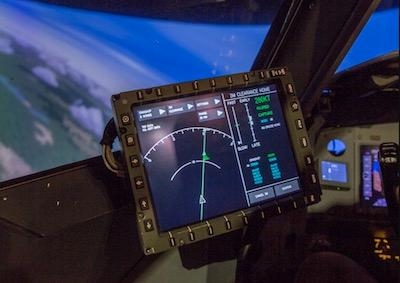Fri, Oct 05, 2018
Flight Deck Interval Management Will Provide Air Traffic Controllers More Precise Information As They Work To Space Aircraft Coming In On Approach
The FAA is optimistic about a NASA-developed technology that promises to increase capacity and reduce delays, fuel burn and emissions.

The FAA, NASA and others from the aviation industry today celebrated the transfer of a technology developed by NASA that will be used by the FAA and airlines.
The new technology, called Flight Deck Interval Management (FIM), integrates with another technology called Terminal Spacing and Sequencing (TSAS) to improve the use of performance-based procedures – to make it more efficient to land in congested terminal airspace.
FIM will provide air traffic controllers more precise information as they work to space aircraft coming in on approach. Controllers receive visual aids on their screens that help them execute clearances and conform to sequencing schedules to help aircraft arrive on time. The controller informs the pilot of the aircraft’s trajectory and the pilot enters the information into the FIM system.
The information is processed for the pilot through a satellite based navigation tool called Automatic Dependent Surveillance-Broadcast (ADS-B). With this information, the pilot assesses what speed to fly to enable them to do a performance based procedure into the airport.
The combined FIM and TSAS tools will provide numerous benefits.
Using performance-based operations, aircraft will spend less time in the air burning fuel and emissions. When aircraft burn less fuel, it saves money for the airlines. Passengers benefit because there’s a better chance their flights will arrive on time.
The FAA, NASA and industry are working together under a project called Air Traffic Management Technology Demonstration 1 or ATD-1 to bring new technologies to market that are designed to improve arrival times. FIM is one of the technologies that stems from that partnership. Boeing, Honeywell and United Airlines participated in the FIM development and flight test which involved two aircraft from Honeywell’s flight test fleet as well as a United 737.
(Source: FAA news release)
More News
“We have seen astounding demand for the G800, and the entire Gulfstream team is excited to begin making deliveries to our customers. The G800 is entering service with extraor>[...]
Aero Linx: Recreational Aviation Australia (RAAus) Recreational Aviation Australia is progressively working towards improving safety outcomes through a holistic approach to safety >[...]
Classic Klyde Morris From 11.07.16 (and Remembering Bob...) FMI: www.klydemorris.com>[...]
Also: GADFLY AI-Driven Engine Analysis, Knockoff Iranian Drones, Russian Surveillance, 40 NASA Missions Chopped This year’s Zenith Homecoming event will soon be taking off at>[...]
Also: H55 Completes American Tour, Robinson Trade-Ins, Retired AV-8B Harrier, NS-35 Mission Organizers of the iconic annual Air Race Classic will soon be opening registration for t>[...]
 Aero-News: Quote of the Day (08.28.25)
Aero-News: Quote of the Day (08.28.25) ANN's Daily Aero-Linx (08.28.25)
ANN's Daily Aero-Linx (08.28.25) Classic Klyde Morris (08.25.25)
Classic Klyde Morris (08.25.25) Airborne 08.25.25: Zenith Homecoming, VP Racing, Affordable Flying Expo 2025
Airborne 08.25.25: Zenith Homecoming, VP Racing, Affordable Flying Expo 2025 Airborne 08.22.25: ARC Spinoff, Nat'l Championship Air Races, Hawkins Accident
Airborne 08.22.25: ARC Spinoff, Nat'l Championship Air Races, Hawkins Accident



